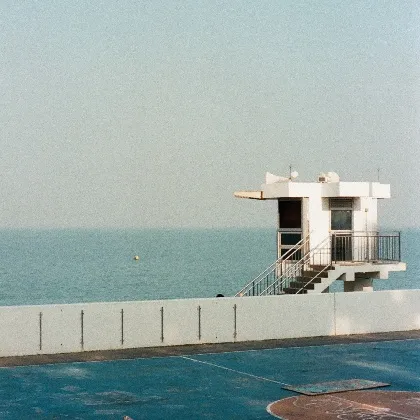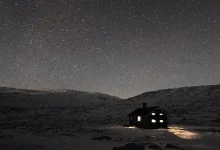Capricorn: The Embodiment of Resilience and Patience

Unlocking the Secrets of Capricorn Through Solar Terms
Have you ever been intrigued by the steadfast nature of Capricorns? While zodiac stereotypes often paint them as overly rigid or unemotional, the truth is far more nuanced and fascinating. By exploring the ancient Chinese solar terms associated with Capricorn—specifically, the Winter Solstice (Dongzhi) and Minor Cold (Xiaohan)—we can gain a deeper, more scientific understanding of why Capricorns embody such remarkable traits like resilience, patience, and perceptiveness. This perspective not only demystifies their character but also highlights how celestial cycles influence human behavior in profound ways.
The Winter Solstice: A Time of Hidden Depths
Capricorn’s journey begins with the Winter Solstice, which typically starts around December 22 and ends around January 4. This period marks the sun’s southernmost point, bringing the longest nights and a palpable sense of cold. Yet, it’s also a turning point where daylight gradually increases, symbolizing the slow return of warmth and vitality. This duality mirrors Capricorn’s inner world: they may appear reserved or rule-bound on the surface, but beneath lies a reservoir of emotion that grows richer with time, much like the rising temperatures after the solstice.
The Winter Solstice is divided into three phases, or “hou,” each revealing aspects of Capricorn’s nature:
- First Hou: Earthworms Curl – In this phase, earthworms remain coiled in the soil, reflecting the persistent cold despite the nascent (yang energy). Capricorns excel in (endurance), keenly aware of their surroundings and choosing not to force themselves into the spotlight unnecessarily. Their wisdom lies in knowing when to retreat to advance, a strategy that serves them well in life’s challenges.
- Second Hou: Elk Sheds Antlers – As yin energy wanes and yang energy grows, elks naturally shed their antlers, which were once used for defense. This symbolizes Capricorn’s perceptive nature; though they might not seem (sharp) at first glance, they express their attitudes through actions rather than words. When met with warmth and sincerity, Capricorns gradually lower their guards, showing that they are far from (indifferent)—they simply require genuine connections to thrive.
- Third Hou: Springs Begin to Flow – With (the initial rise of yang energy), frozen springs start to melt and flow, representing (vibrant life). Similarly, Capricorn’s inherent rules and structures, like ice, can soften when exposed to warmth. They crave authentic feedback from others and, in return, offer deep emotional loyalty. In matters of love, Capricorns shed their rigidity, proving that they are not as (dogmatic) as perceived.
During the Winter Solstice phase, Capricorns should focus on honing their perception to uncover opportunities and breakthroughs in daily life. Their patience allows them to appreciate life’s subtle beauties, building a foundation for future growth.
Minor Cold: The Phase of Accumulated Strength
Transitioning into Minor Cold, which spans from around January 5 to January 19, Capricorns enter a period where cold intensifies but hasn’t yet peaked. This is a time of (accumulation), where energy is stored for eventual release. Capricorns embody this through their (steadfastness) and (composure), standing firm like the unshakable earth during Xiaohan. They understand the power of gathering strength during adversity, making them adept at overcoming obstacles with inner fortitude.
Minor Cold also features three phases that illuminate Capricorn’s traits:
- First Hou: Wild Geese Head North – Geese migrate northward as (yang energy increases), following patterns that ensure their survival. Capricorns are often criticized for being too rule-oriented, but this phase shows their wisdom in sticking to what works best for them. They know that consistency breeds comfort and success, and sometimes, sticking to the familiar is exactly what’s needed.
- Second Hou: Magpies Start Building Nests – Magpies begin nesting in response to the rising energy, creating safe havens for their families. This highlights Capricorn’s strong sense of security and love for home. They thrive when they have a stable base—a place that offers emotional safety—which empowers them to face external challenges with confidence and courage. A solid foundation fuels their ambition and drive.
- Third Hou: Pheasants Begin to Call – Pheasants start vocalizing during the coldest part of the year, symbolizing how hardship can unleash hidden potential. Capricorns shine in tough environments; where others might struggle, they find their stage to excel. This phase encourages Capricorns to tap into their accumulated energy and make a impactful display of their abilities.
In the Minor Cold phase, Capricorns should focus on strategic releases of their stored energy, allowing others to witness their full potential. This is where patience transforms into powerful action, creating value and inspiring those around them.
Embracing the Capricorn Spirit
Overall, the interplay of Winter Solstice and Minor Cold gifts Capricorns with a unique blend of (patience) and (resilience). These solar terms teach us that Capricorns are not just about rules and cold exteriors; they are deeply emotional, perceptive, and capable of great warmth when nurtured. By understanding these cycles, we can appreciate how Capricorns navigate life with a balance of caution and courage.
For those under this sign, embrace your innate abilities: use your perception to detect opportunities during challenging times, and when the moment is right, unleash your accumulated strength to achieve remarkable feats. As the ancient poetry says, “Butterflies dance leisurely by the curtain, gulls glide swiftly over rapids”—Capricorns, through these seasons, harvest infinite fortitude and patience, making them timeless pillars of strength in our world.





